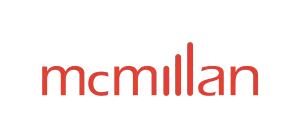- within Transport and Insolvency/Bankruptcy/Re-Structuring topic(s)
- with Senior Company Executives, HR and Finance and Tax Executives
- with readers working within the Accounting & Consultancy, Banking & Credit and Business & Consumer Services industries
The Canadian Competition Act has seen a whirlwind of changes over the past three years, as outlined in a number of recent McMillan bulletins.1 One major change to the Act is the expansion of remedies available to private parties through Competition Tribunal litigation, as well as an adjustment to the test by which private parties may seek leave to bring Tribunal applications. Specifically, in addition to the ability to order increased administrative monetary penalties, or ("AMPs") – now up to 3% of worldwide turnover – the Tribunal will soon (as of June 2025) have the ability to order payments directly to those injured by reviewable conduct. The type of actions which may be challenged by private parties has also recently expanded to include abuse of dominant market position, and the test for private parties to obtain leave from the Tribunal to bring cases has been adjusted to make obtaining leave somewhat easier. The combination of these changes adds to the risks associated with allegations of abuse of dominance, as well as to the likelihood of challenges by those affected, in addition to government challenges.
Although these amendments, those now in force and those soon to come into effect, are significant, the Tribunal's refusal to grant leave to a private party in a recent application with respect to abuse of dominance may raise questions about how wide the gates to private litigation have been thrown open. The ruling in this case, JAMP Pharma v Jannssen Inc.2 suggests the Tribunal may be quite rigorous in the evidentiary standards it requires in order to grant leave.
Private Parties Challenges to Abuse of Dominance
Private parties require leave from the Competition Tribunal before initiating a case. As of June 23, 2022, private parties obtained the right to challenge abuse of dominance under the Act, with such leave. JAMP is the third case filed under this expanded right of private action, but the first to reach the leave stage. The JAMP case raises important questions about the standard of evidence that will be required to obtain leave.
In July 2024, JAMP made an application to the Competition Tribunal to bring a case against Janssen under the abuse of dominance provisions. Under the Act, in order to be granted leave JAMP needed to demonstrate that there was reason to believe that JAMP was directly and substantially affected in its business by conduct which could be the subject of an order under the abuse of dominance provisions. JAMP alleged that Janssen engaged in a practice of anti-competitive acts intended to prevent (or at least delay) competitors' entry and expansion in the market for the supply of ustekinumab drugs, used to treat certain inflammatory diseases such as plaque psoriasis, by JAMP and other competitors that supplied biosimilars.
The Tribunal denied JAMP leave to bring its proposed challenge because, while JAMP provided a large volume of evidence, the Tribunal concluded that it had failed to provide sufficient credible, cogent, and objective evidence, demonstrating that its business had been directly and substantially affected by Janssen's conduct, and that JAMP conduct was such that it could be the subject of an order under the abuse of dominance provisions.
JAMP's Allegations Against Janssen
JAMP alleged that Janssen abused its dominant position in the market for the supply of ustekinumab drugs to sustain a monopoly and block competitors through the following conduct:
- Sham Litigation: JAMP alleged that Janssen conducted frivolous patent litigation for over two years regarding its ustekinumab biologic, Stelara, with the goal of excluding competitors.
- Finlius as a "Fighting Brand": JAMP alleged that Janssen introduced the branded product Finlius just at the point when Janssen's competitors were seeking to introduce their biosimilars, in order to block rivals and introduce market uncertainty.
- Misuse of Janssen's Patient Support Program, BioAdvance: JAMP alleged that Janssen misled healthcare professionals about the availability of a biosimilar through its BioAdvance patient support program, thereby delaying biosimilar adoption. This allegedly included issuing deceptive and vague communications to physicians about a forthcoming biosimilar. JAMP also alleged that Janssen later informed prescribing physicians that the biosimilar would be Finlius, hindering JAMP's efforts to facilitate patient switching to its biosimilar, Jamteki. JAMP also asserted that Janssen advised patients to continue to use its product, Stelara, despite a provincial drug plan's directive to switch to Jamteki. Further, JAMP contended that Janssen informed Health Canada that Finlius's marketing campaign began on July 2, 2024, while Janssen had already been marketing Finlius to private insurers (and had misled them into believing that Finlius was a biosimilar).
- Intimidation: Jamp alleged that Janssen used NDAs with prescribing physicians to discourage them from meeting JAMP's sales representatives to discuss Jamteki.
- Predatory Pricing: JAMP contended that Janssen indicated its intentions to engage in predatory pricing against Jamteki to delay the switch from Stelara.
JAMP argued that this alleged anti-competitive conduct significantly lessened competition. To this end, JAMP contended that despite the entry of JAMP's biosimilar on March 1, 2024, Janssen's share of ustekinumab sales in Canada remained above 99.8%. Absent Janssen's actions, JAMP contended that the penetration rate of ustekinumab biosimilars would have been considerably higher.
JAMP's application also set out extensive proposed remedies, including:
- Prohibiting Janssen from marketing or selling Finlius for 10 years;
- Barring Janssen from seeking approval from the Minister of Health, to market or sell any other "relabeled biologic" drug;
- Prohibiting Janssen from offering a Stelara biosimilar through or in connection with the BioAdvance PSP for 5 years;
- Preventing Janssen from offering a Stelara biosimilar via the BioAdvance program, charging excessive fees for services, and enforcing NDAs against healthcare professionals for 5 years;
- Appointing a monitor to oversee Janssen's marketing and sale of biologic drugs for 5 years; and
- A monetary penalty of at least $1 billion.
The Competition Tribunal's Analysis
Ultimately, the Tribunal declined to grant leave to JAMP to bring the application, finding that, despite the filing of a significant volume of evidence, there was not sufficient credible, cogent, and objective evidence adduced to support a bona fide belief that there had been a contravention of the prohibition on abuse of dominant conduct or that JAMP was directly and substantially affected in its business by Janssen's practice.
Specifically, the Tribunal found that:
- JAMP did not provide sufficient, credible evidence to support its claims of sham litigation or manipulation of the regulatory system. The Tribunal noted that JAMP failed to address the validity of either the patent listing or Janssen's judicial review proceedings. Additionally, JAMP did not present evidence showing that the alleged sham litigation delayed its market entry or had an exclusionary effect. The Tribunal further noted that Janssen did not hinder JAMP's entry into the ustekinumab market, as JAMP was unable to enter the market until it received Health Canada approval.
- JAMP did not produce evidence demonstrating that Finlius was sold at predatory prices to force it out of the market. The Tribunal found no substantial or credible evidence indicating that Janssen's Finlius drug was a "fighting brand" designed to eliminate JAMP, as JAMP failed to present any argument showing that it was forced out of the market due to Finlius.
- The Tribunal determined there was insufficient credible evidence to support claims that Janssen engaged in predatory pricing. JAMP alleged Janssen temporarily provided patients with free Stelara until they could transition to Finlius in order to have an anti-competitive impact. Janssen countered this claim by stating that some patients received free medication on a compassionate basis, which it argued was a pro-social rather than anti-competitive practice. The Tribunal found no evidence to suggest that Janssen's free supply of Stelara changed with the introduction of biosimilars.
- JAMP did not provide any evidence from prescribing physicians to support its claim that they were misled by Janssen. JAMP alleged that Janssen's patient support program created confusion and hindered competition by sending communications to physicians that were intentionally unclear about the availability of biosimilars, offering misleading guidance, such as stating that there was no need to switch patients from Stelara to a biosimilar, and using "insurance discovery" to steer new patients toward Janssen's products. However, the Tribunal found JAMP's evidence to be weak, as it relied primarily on claims of omissions and vague statements. Ultimately, there was no testimony from prescribing physicians to support JAMP's claims of being misled by Janssen.
Thus, although JAMP delivered four substantial affidavits in support of its application to the Tribunal, this nonetheless proved insufficient to support an order granting leave to commence the proceeding.
Clarification on the "Substantial and Direct Impact" Standard
While the tribunal denied leave to JAMP, it did determine that where applicants seek to bring a case under the abuse of dominance provisions they need not show that their entire business was directly and substantially affected by the impugned conduct for leave to be granted—just part of it. This aligns with the upcoming amendments to the Act, which will codify this standard for private access applications for reviewable conduct.
The Tribunal reasoned that sections 78 and 79 of the Act focus more on markets than do the other reviewable provisions. Unlike other reviewable practices, which assess specific business conduct, abuse of dominance focuses on a firm's control over a market and its impact on competition. Section 79 requires that a firm control or substantially control a market and assesses the competitive effects of the alleged conduct. In that context, a firm may only have dominance in one specific product market. Accordingly, the Tribunal emphasized that an applicant only needs to show that part of its business was substantially affected within the relevant market, rather than the entire business.
As of June 20, 2025, persons who are directly and substantially affected by various types of reviewable conduct, including abuse of dominance, in all or part of their businesses, may be granted leave to bring a Competition Tribunal challenge.3 As well, the Competition Tribunal may grant leave to a private party to bring an application if it concludes that it is in the public interest to do so.4
So, What's Next?
In JAMP, the Tribunal applied significant critical scrutiny to the evidence delivered in support of JAMP's application for leave to commence a proceeding, particularly with respect to whether there had been a violation of the abuse of dominance provision and with respect to whether the applicant was directly and substantially affected. On the other hand, as noted, the Tribunal held (even though the relevant statutory amendment was not yet in effect) that applicants seeking leave to bring a section 79 abuse of dominance application need only show that part of their business was substantially impacted by the impugned conduct. This is consistent with the most recent amendments to the Act that will come into force in June 2025.
It remains to be seen what impact the Tribunal's dismissal of the JAMP leave application will have on other applications for leave from the Tribunal, with respect to abuse of dominance provisions, or other types of reviewable conduct. The Tribunal's decision sends a reasonably clear message that while Parliament has provided a mechanism for private litigation at the Tribunal, a fairly rigorous preliminary scrutiny of claims appears likely. While this was not articulated as part of the Tribunal's reasons, the requirement for robust evidence at the leave stage may signal a concern that, absent a fairly extensive, persuasive approach to the leave test, with the advent of disgorgement remedies the Tribunal may find itself the forum for such volume of strategic litigation. Whether or not this concern underlies the Tribunal's approach to the leave test with the advent of the availability to seek monetary remedies to those injured as of June 2025, we are likely to see the limits tested on these issues.
With the significant recent changes to the Abuse of Dominance provisions, many firms may be examining conduct – their own or their competitors more closely, in order to understand the risks and opportunities with respect to Competition Tribunal litigation. As always, members of McMillan's Competition, Antitrust and Foreign Investment Group are happy to speak with you and answer any questions you may have.
Footnotes
1 Please see our prior bulletins discussing these amendments: McMillan LLP, Significant Changes Coming to Canada's Competition Act (May 3, 2022); McMillan LLP, Competition Act Amendments Introduce New Criminal Offence Against Wage Fixing and No Poach Agreements (May 3, 2022); McMillan LLP, Round One of Competition Act Amendments Passed; National Security Review Regime Amended (June 27, 2022); McMillan LLP, Competition Act Amendments on a Rocket Docket (September 26, 2023); McMillan LLP, Transformative Change: Your Guide to Canada's Breathtaking Competition Act Changes (December 5, 2023); McMillan LLP, Competition Act Amendments Proceed at Pace (December 27, 2023); McMillan LLP, Storm Clouds Looming the Impact of Competition Act Changes on Leasing (March 4, 2024); McMillan LLP, Ready for Change? Bill C-59 Rewrites the Competition Playbook (June 21, 2024); McMillan LLP, Changes to the Competition Act: What Merging Parties Need to Know (July 23, 2024) and McMillan LLP, What's New in the FAQs: Recent Competition Bureau Guidance on the Amendments to Canada's Competition Act (December 3, 2024).
2 JAMP Pharma Corporation v Janssen Inc., 2024 Comp. Trib. 8, 2024 CanLII 121994
3 Bill C-59, Fall Economic Statement Implementation Act, 2023, 1st Sess, 44th Parl, 2024 (assented to June 20, 2024) at s. 254(4).
4 Ibid.
The foregoing provides only an overview and does not constitute legal advice. Readers are cautioned against making any decisions based on this material alone. Rather, specific legal advice should be obtained.
© McMillan LLP 2025




